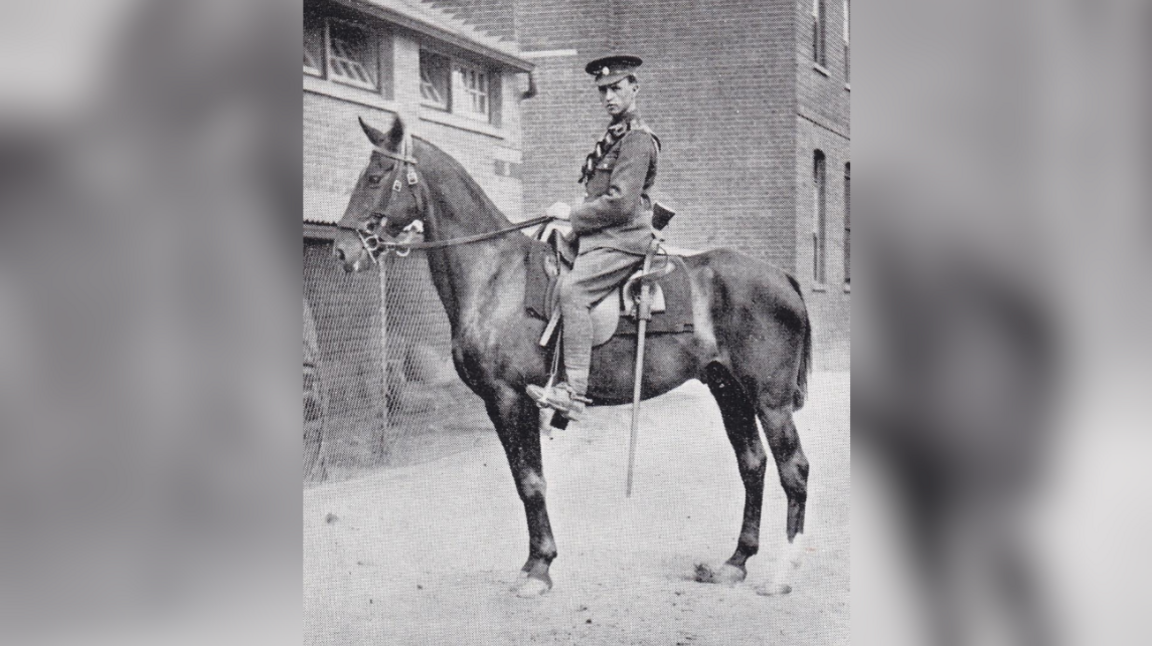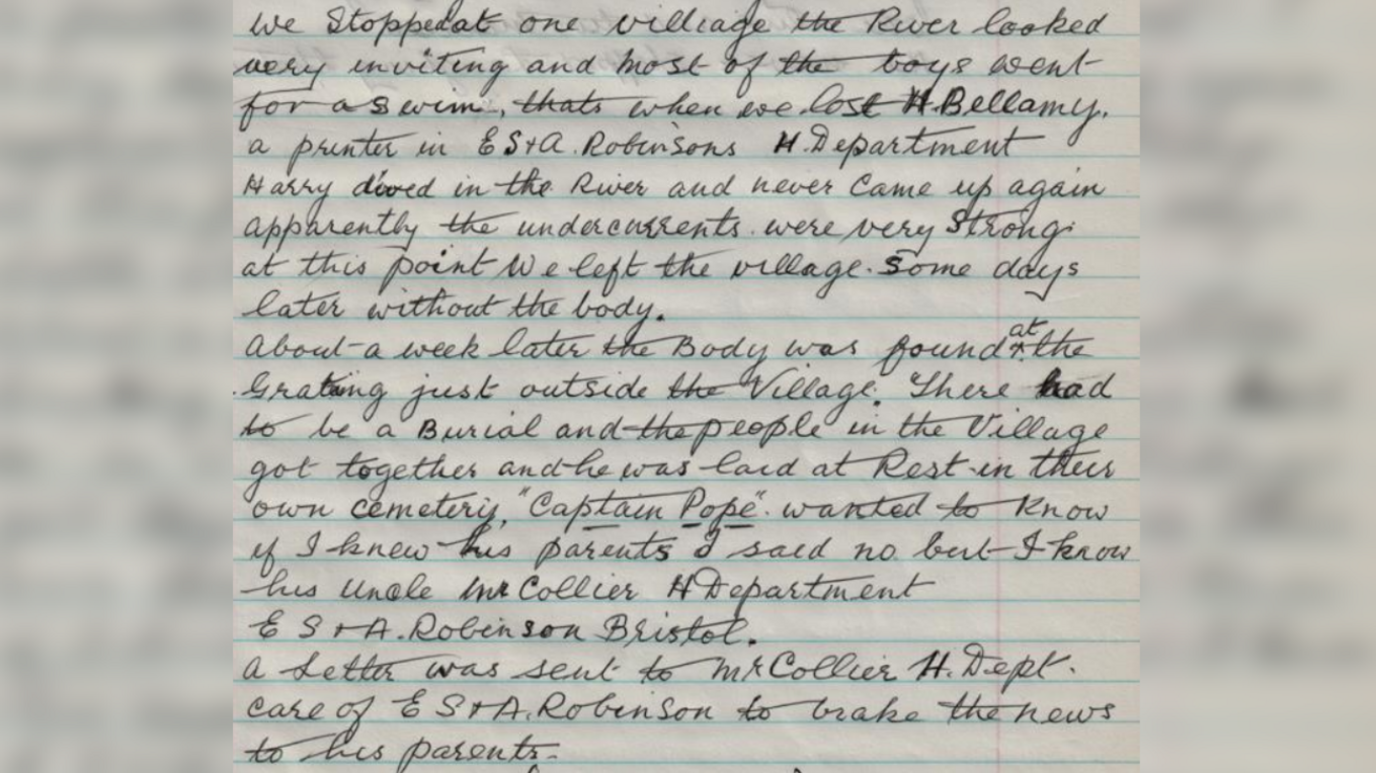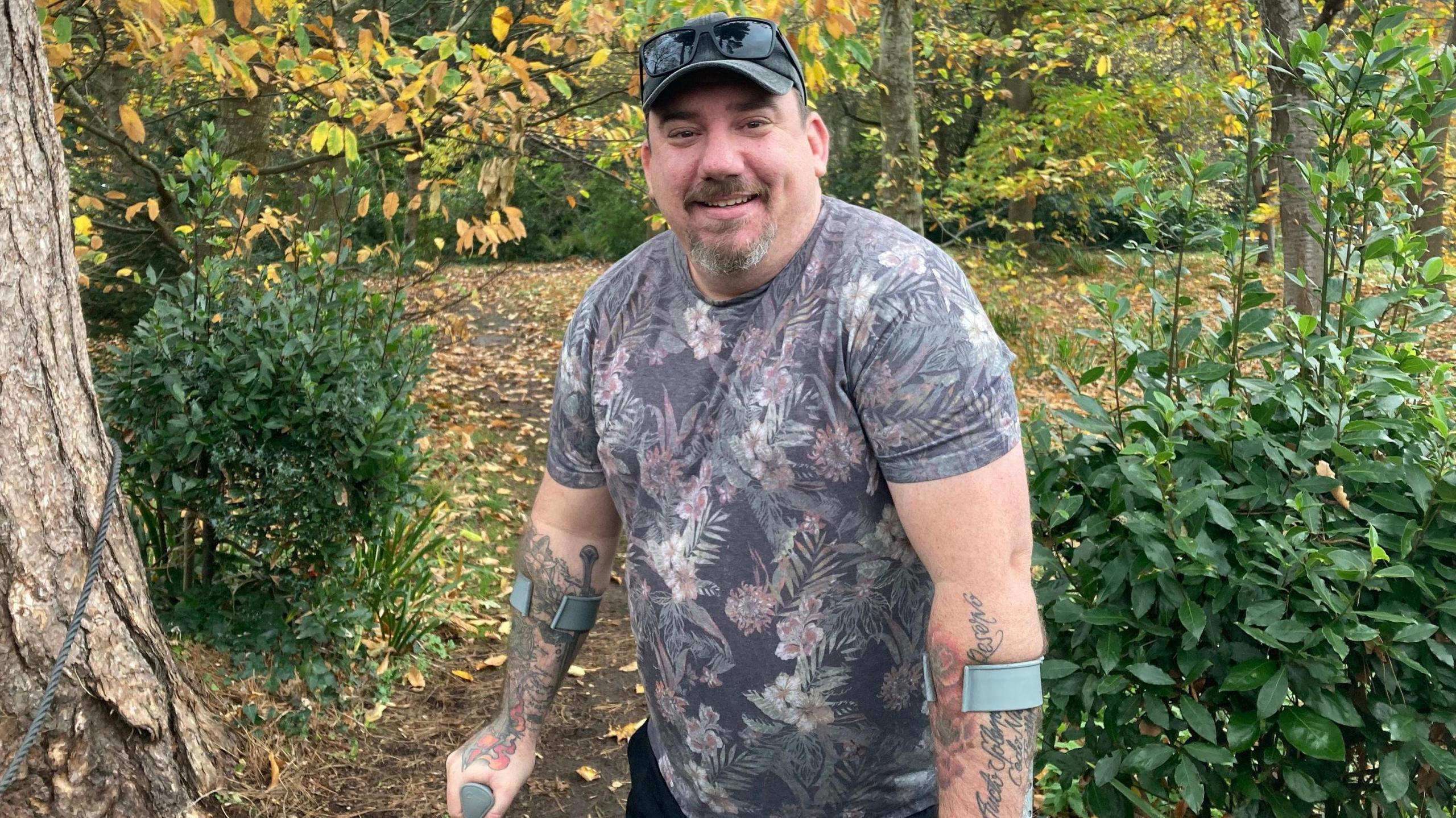Man's quest to get WWI soldier recognised

This is the only known photograph of Pte Henry Bellamy
- Published
A man's quest to get a fallen World War One soldier recognised has been rewarded with a plaque in the French village where he died.
Pte Henry Bellamy from Bedminster, Bristol, fought with the North Somerset Yeomanry at the Battle of Arras in 1917, but drowned while swimming in a river when his unit was moved away from the frontlines.
James Clements from Bradley Stoke, South Gloucestershire, found Pte Bellamy's grave in Nempont-Saint-Fermin, France, while researching his own great-grandfather who served in the same regiment, and was able to find one of his distant relatives.
On Tuesday, Pte Bellamy was formally recognised with a plaque and a small ceremony in the village where he was buried.
"It was a really wonderful tribute," said Mr Clements.

The plaque is next to Henry Bellamy's grave in the north of France
Mr Clements had initially hoped to trace Pte Bellamy's family, but when he found there were no surviving close relatives he resolved instead to share the soldier's story more widely.
"I researched his journey overseas in 1915, his service with the North Somerset Yeomanry, and ultimately the circumstances of his death," he explained.
Among Mr Clement's discoveries was a letter written by his own great‑grandfather, Richard James Dufty, which described Pte Bellamy's final moments.
What he did not realise was that his grave had already drawn attention two decades earlier.
In the early 2000s, a visitor to France wrote about it in the Bristol Evening Post. One reader, Doreen Heal, recognised the names of Pte Bellamy's parents — her great‑grandmother had been Henry's aunt.
In 2002, Ms Heal's niece, Chris Price, who was living in France, wrote to the village seeking more information but never received a reply.

A letter written by Mr Clements' grandfather details the circumstances around Pte Bellamy's death
Mr Clements visited the grave in September 2023 and found it was the only UK or Commonwealth war grave in Nempont-Saint-Fermin.
He placed a laminated copy of his grandfather's diary entry on the headstone before leaving. The extract was later discovered and passed to the town mayor, who in turn unearthed Ms Price's original letter in the local archive.
The village decided Pte Bellamy's grave should be formally recognised with a plaque and a small ceremony.
On Tuesday, schoolchildren read poems at the unveiling, attended by a crowd of about 50 people, including both Ms Price and Mr Clements.
"It's a great feeling to know that Henry's still being remembered more than 100 years later," said Mr Clements.
"When I first started researching him I thought nobody had remembered him."
Get in touch
Tell us which stories we should cover in Bristol
Follow BBC Bristol on Facebook, external, X, external and Instagram, external. Send your story ideas to us on email or via WhatsApp on 0800 313 4630.
Related topics
- Published10 November

- Published11 November

- Published11 November
